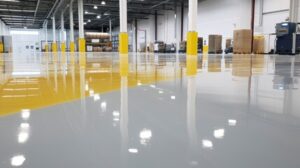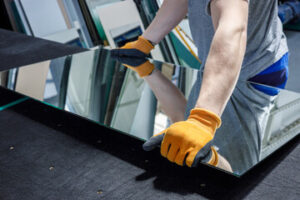If you notice cracks in your ceiling, it is important to get them repaired as quickly as possible. Leaving them untreated can lead to structural issues and other costly problems.
Hairline cracks can often be cosmetic and require only patching with drywall mud or joint compound. Long cracks, however, may indicate structural settling and should be looked at by a professional. Contact Ceiling Repair Perth now!

Water damage is a common issue that can occur when a home or business experiences a ceiling leak. If the problem isn’t immediately repaired, water can spread and lead to expensive structural damage. Thankfully, there are a few simple steps to take to help mitigate the issue and reduce costs.
The first step is to locate the source of the leak. The best way to do this is to look at the area where the water spot or stain is located. The location and timing of the leak may give you clues as to what caused it. For example, if the water damage is caused by a torrential downpour, it likely indicates there’s an issue with your roof or gutters. If the spot is directly below an upstairs bathroom or shower, it could indicate a leaky pipe.
Once you’ve located the source of the leak, shut off the water supply to prevent further damage until a professional arrives. It’s also important to move any furniture out of the way or cover it with a tarp to prevent water damage. Place buckets or large containers under any dripping areas to catch the leaking water.
Drying out the affected area is the next step in repairing your ceiling. To speed up the process, open windows to allow proper ventilation. It’s also a good idea twhich can be disposeds anehumidifiers.
When a wall or ceiling is wet, it’s possible for mould to grow. Mould thrives in dark, damp environments and can be extremely harmful to health if left unchecked. Mould can cause respiratory issues, skin irritations, eye problems and headaches.
Water spots and stains on the ceiling can be hard to notice unt’s too late, but they should never be ignordamagingurce of the water stain isn’t found and corrected, it can become worse, leading to mold growth, structural damage and more.
The most important thing to remember is that water damaged ceilings are a high priority issue that needs to be addressed quickly to avoid costly damages. If you suspect you have a ceiling leak, contact an IICRC-certified service professional right away to address the issue and minimize damage.
Structural Issues
While cracks in walls and ceilings occur naturally over time, some are a sign of structural issues that must be addressed immediately. Cracks that widen over time indicate a serious issue, and are especially alarming if they’re accompanied by sagging or other visible signs of damage. A ceiling crack that runs down a wall is particularly dangerous and should be repaired immediately, as this indicates foundation movement and possible structural damage.
Structural settling, which is usually characterized by hairline cracks, can also be an indication of serious problems. This is most often caused by expansion and contraction of building materials, which are exacerbated by environmental factors like temperature changes. These types of problems can be more difficult to identify and address than standard ceiling cracks, and may require resurfacing or reinforcing affected wood trusses.
Another cause of serious damage is water infiltration. This can be due to a leaky roof or plumbing, and must be repaired promptly to prevent structural damage and potential mold growth. Water damage also weakens plaster, making it more prone to cracking. Regularly inspecting your ceiling for moisture and addressing any issues progather a few supplies ahead of time to ensure help prevent these problems.
Discign of water damage, and should be fixed immediately. If you notice that the crack is a different color than your ceiling, it could be a sign of a pipe leak, which should be addressed as soon as possible.
Ceilings are more likely to experience structural issues than other areas of the home, as they bear the brunt of a building’s weight and the pressure of shifting soil. This is why you might hear bangs and clicks in older homes, which are simply the house adjusting to new conditions.
Damaged Drywall
Water damage to drywall can be a major issue, as it can lead to mold, mildew, and rot. In addition, it can damage the structural integrity of the ceiling and leave visible marks that may bleed through paint jobs or even result in the collapse of the ceiling. While minor leaks can be dried out, it is essential to deal with serious water damage and mold as soon as possible. The first step in repairing water-damaged drywall is to identify the source of the water. Once this is done, the affected area must be completely dried to prevent microbial growth. This can be done by using a dehumidifier and fans to create air circulation around the affected area.
When doing a drywall repair, it’s essential to use joint tape and a good quality joint compound that will provide a strong, long-lasting seal. Once the compound has been applied and allowed to dry, it should be sanded with fine-grit sandpaper until it is flush with the drywall panels. This will help ensure that the repaired areas are as strong and durable as the rest of the drywall.
Besides water damage, other common problems with drywall are holes and cracks. While holes can be patched up with joint compound, severe cracks should be inspected by a professional to determine the cause of the cracking and to ensure that it is repaired correctly.
Another common problem with drywall is dented corner bead. This is typically caused by regular wear and tear on the drywall or by moving furniture around the house. A drywall patch will usually fix this problem, but if it is a large dent, it’s likely best to have the damaged section of the ceiling replaced.
Although there are many ways to prevent drywall damage, one of the most effective solutions is to hire a drywall repair expert. They will be able to assess the situation and recommend the appropriate solution, which may include replacing the damaged drywall. This will ensure that the problem is fixed quickly and effectively, preventing future damage and saving homeowners money and time in the long run.
Mold
If there are signs of mold, it is important to address them immediately. Mold spores spread quickly and can cause health problems, including allergic reactions in some individuals. Mold growth often indicates an underlying issue, such as humidity or water damage. Promptly addressing any of these issues will prevent further damage to the ceiling and ensure the fungus doesn’t return after the area is repaired.
Moisture and mold are two of the most common ceiling issues that homeowners must deal with. Mold growth is often caused by a combination of factors, such as poor ventilation and missing insulation. In addition, a roof leak may lead to the formation of mold near the wall/ceiling junction. To identify the source of the problem, start by checking the area around the suspected leak for discolored patches or a musty odor. Then, inspect the attic to locate any stains or areas of wetness on the roof and surrounding walls. If you can’t find the source of the leak, check the wall/ceiling junction with a moisture meter to see if the area is damp.
Once you’ve found the source of the problem, clean and dry the area before repairing it. Make sure to use a non-abrasive brush or sponge to avoid damaging the drywall. Rinse your brush or sponge frequently, and scrub until all traces of mold are gone. Be sure to keep a fan running and the windows open during this process. This will facilitate airflow and speed up the drying process.
If you have a significant amount of mold growth on your ceiling, it may be necessary to remove and replace the entire section of drywall. This is typically the only way to fully eliminate mold and prevent future growth. If the mold is not penetrating the drywall, however, it may be possible to simply repair and repaint. If you’re not comfortable dealing with this type of project on your own, it’s best to seek professional help from a reputable drywall contractor.

